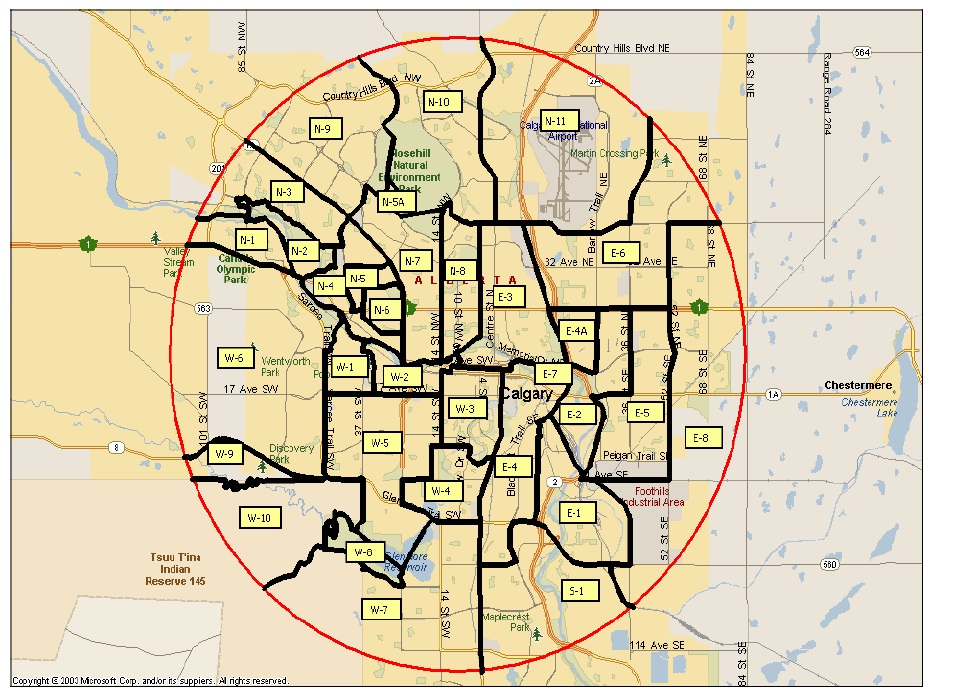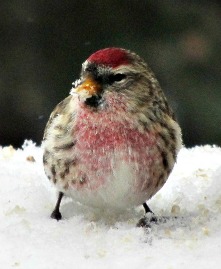By Phil Cram
Thanks to everyone who participated in the 61st Calgary Christmas Bird Count on December 16, 2012. A record number of 249 birders took part in this year’s count, with 113 feeder-watchers and 136 observers in the field. Birders in the field put in a total of 239 party-hours, 77 percent on foot, covering 239 km on foot and 1156 km by car.
Some count highlights:
65 species were recorded, equalling our average for the past 20 years.
57,149 individual birds were counted, our fifth-highest. Bohemian Waxwings were the most numerous, with almost 17,000 counted, and over 1000 individuals were counted for another nine species.
We had a new species for the count, but unfortunately just for count-week. A Clark’s Nutcracker was seen in Hawkwood on Saturday, perhaps a first-ever sighting in the city. One other rarity was a Yellow-rumped Warbler in Wentworth, first seen and photographed earlier in December and which has survived at least until count-day.
Other unusual species (recorded in two or less years in the prior ten): Trumpeter Swan, 2; Gadwall, 1; and Common Grackle, 1.
Record numbers for: Trumpeter Swan, 2; Redhead, 23; Northern Goshawk, 8; Mourning Dove, 4; American Crow, 152; Common Raven, 537; and Brown Creeper, 31.
High Counts (more than three-times the prior ten-year average) for: Lesser Scaup, 9; Red Crossbill, 237; White-winged Crossbill, 1101; Common Redpoll, 1940 (second-highest count ever); and Hoary Redpoll, 9.
Low counts (less than one-third the prior ten-year average) for: Common Goldeneye, 332 (compared with 3062 last year, the highest in Canada); European Starling, 109; Cedar Waxwing, 2; and Snow Bunting, 1.
Missing species (seen on count-day in seven or more years in the prior ten, but missed this year) were: American Wigeon, Harlequin Duck, Hooded Merganser and Mountain Chickadee.
Species seen by only one route (All feeder-watchers counted as one route): Gadwall, Northern Pintail, Redhead, Greater Scaup, Ruffed Grouse, Red-tailed Hawk, Killdeer, Belted Kingfisher, American Dipper, Cedar Waxwing, Yellow-rumped Warbler, American Tree Sparrow, Snow Bunting, Rusty Blackbird and Common Grackle.
Species seen by only two routes (All feeder-watchers counted as one route): Trumpeter Swan, Barrow’s Goldeneye, Cooper’s Hawk, Mourning Dove, Pileated Woodpecker, Townsend’s Solitaire, White-throated Sparrow and Purple Finch.
Unverified Species, not included in species list (Awaiting further details and/or documentation): Double-crested Cormorant, Chestnut-backed Chickadee and Song Sparrow.
I will be presenting the results at the Bird Study Group meeting on Wednesday January 9, 2013 at 7:30 PM in Room 211 of the Biosciences Building, University of Calgary, as part of the traditional Calgary region CBC review evening. Please let me know if you notice any omissions or errors in this provisional compilation. Final results will be posted on the Audubon database within two weeks. I will be putting together a route-by-route compilation and will be pleased to email you a copy on request.
List of species recorded on count-day:
Canada Goose, 8399; Trumpeter Swan, 2; Wood Duck, 10; Gadwall, 1; Mallard, 9465; Northern Pintail, 2; Redhead, 23; Greater Scaup, 2; Lesser Scaup, 9; Bufflehead, 148; Common Goldeneye, 332; Barrow’s Goldeneye, 8; Common Merganser, 101; Gray Partridge, 115; Ring-necked Pheasant, 7; Ruffed Grouse, 3; Bald Eagle, 25; Sharp-shinned Hawk, 8; Cooper’s Hawk, 2; Northern Goshawk, 8; Red-tailed Hawk, 1; Rough-legged Hawk, 6; Merlin, 24; Killdeer, 2; Rock Pigeon, 2518; Mourning Dove, 4; Great Horned Owl, 7; Belted Kingfisher, 1; Downy Woodpecker, 139; Hairy Woodpecker, 26; Northern Flicker, 135; Pileated Woodpecker, 2; Northern Shrike, 6; Blue Jay, 97; Black-billed Magpie, 2295; American Crow, 152; Common Raven, 537; Black-capped Chickadee, 1570; Boreal Chickadee, 27; Red-breasted Nuthatch, 632; White-breasted Nuthatch, 59; Brown Creeper, 31; American Dipper, 3; Golden-crowned Kinglet, 54; Townsend’s Solitaire, 2; American Robin, 86; European Starling, 109; Bohemian Waxwing, 16889; Cedar Waxwing, 2; Yellow-rumped Warbler, 1; American Tree Sparrow, 4; White-throated Sparrow, 2; Dark-eyed Junco, 99; Snow Bunting, 1; Rusty Blackbird, 1; Common Grackle, 1; Pine Grosbeak, 152; Purple Finch, 2; House Finch, 1350; Red Crossbill, 237; White-winged Crossbill, 1101; Common Redpoll, 1940; Hoary Redpoll, 9; Pine Siskin, 65; and House Sparrow, 7898.































